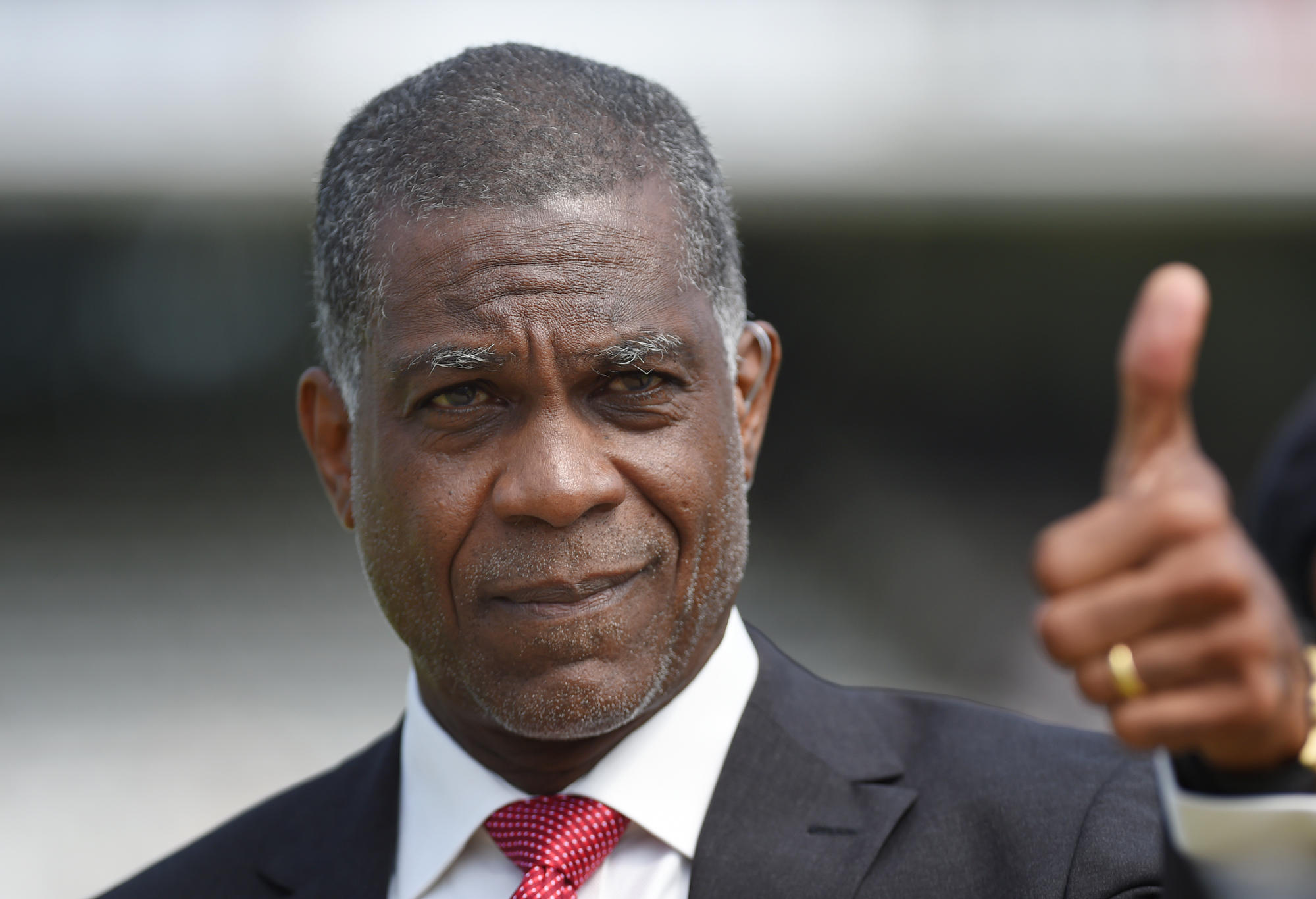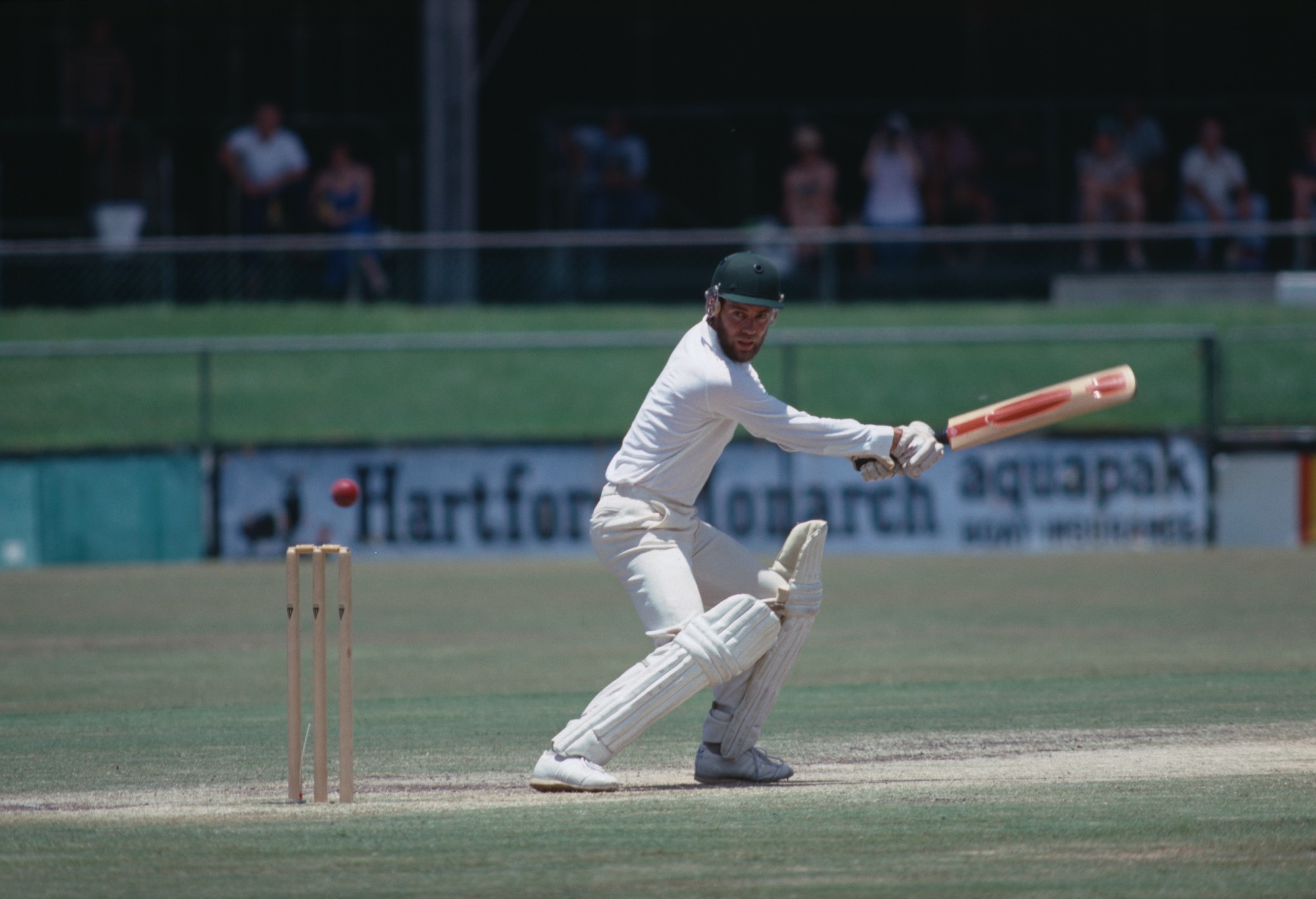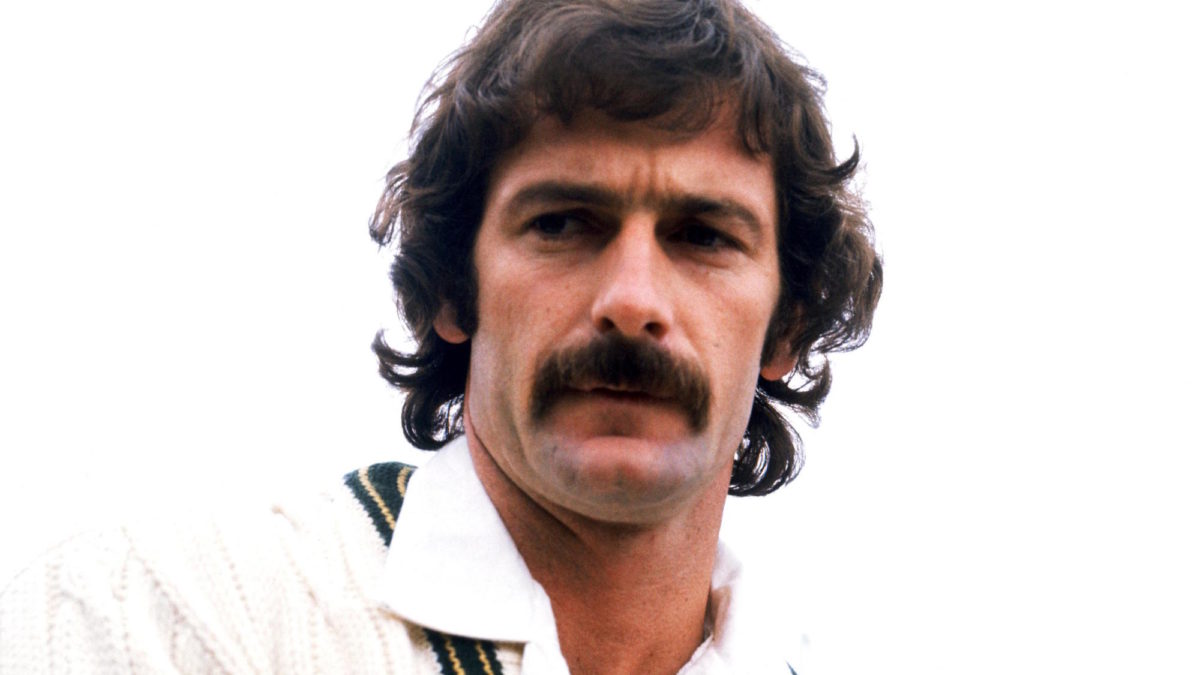With a Frank Worrell Trophy series about to get underway, it’s timely to acknowledge the upcoming 50th anniversary of a memorable one.
It featured a champion home team at its peak, and a visiting side destined to develop into one of the greatest of all time. And remarkably, it happened by accident.
The Australian Cricket Board had previously agreed to send a side to South Africa during the summer of 1975-76.
However, in February it cancelled that tour, citing the risks associated with maintaining sporting links with that country.
The Springboks had already been excluded from the inaugural men’s World Cup to take place during June and England would cancel its 1976-77 tour soon after.
Left with no opponent for 1975-76, the ACB invited the West Indies Cricket Board to bring forward its scheduled 1977-78 tour to Australia by two years. The WICB accepted the invitation in May and its side landed in Sydney five months later.
The teams
The hosts had a new captain in Greg Chappell, who had inherited the role from older brother Ian. They had not lost a Test series for five years, enjoying success against England, the West Indies, New Zealand and Pakistan.
The Chappells, Doug Walters, Ian Redpath, Rod Marsh, Dennis Lillee, Jeff Thomson, Max Walker and Ashley Mallett had become household names. Walters would miss the entire series after dislocating a knee in a Sheffield Shield match, while Ross Edwards had retired following the previous winter’s World Cup and Ashes series. Up-and-coming players included Rick McCosker, Alan Turner and Gary Gilmour.
The West Indian side was rebuilding following the retirements of previous captains Garry Sobers and Rohan Kanhai. New skipper Clive Lloyd’s squad included the experienced Keith Boyce, Roy Fredericks, Lance Gibbs, Vanburn Holder, Bernard Julian, Alvin Kallicharran and Deryck Murray. It also featured three specialist spin-bowlers in Gibbs, Inshan Ali and Albert Padmore.
The touring party featured a quartet of promising players in Gordon Greenidge, Michael Holding, Viv Richards and Andy Roberts. Holding was uncapped, while each of the others boasted fewer than 10 caps. All were aged under 25 years.
Just a few months previously, the visitors had defeated Australia in the World Cup final at Lord’s. But while the Test series was billed in some quarters as a ‘world championship,’ the home side was entitled to consider itself a warm favourite.

Michael Holding. (Photo: Visionhaus/Corbis via Getty Images)
The tour
The West Indians’ itinerary bore little resemblance to current ones. It comprised 23 games in 16 weeks, including six Test matches and a solitary ODI. And the tour’s first two matches took place in Papua New Guinea, as part of that nation’s independence celebrations.
Seven first-class matches were played against State sides, including four prior to the Test series. Games were also played in the regional centres of Bendigo, Dubbo, Cairns, Newcastle, Canberra and Launceston.
While the home side comfortably retained the Frank Worrell Trophy by a 5-1 margin, the damage it inflicted on the visitors was not limited to the scoreboard, with Lillee and Thomson at their intimidating best. Ali had to retire hurt at the ‘Gabba, while Kallicharran suffered a broken nose at the WACA. And Julien fractured a thumb at the SCG, where Holding and Lloyd were struck in the face and also forced to retire.
The West Indians’ form and resistance fell away badly as the series progressed. While in defeat they maintained a record-high average scoring rate of 61.3 runs per 100 balls, they also set a new record-low average over-rate. And reserve ‘keeper David Murray would have been sent home for his frequent marijuana use, had it not been for the intervention of Gibbs.
First Test, ‘Gabba
The West Indies returned to the scene of a famous victory on their previous tour. After Lloyd elected to bat, his team batted recklessly and quickly slumped to 6-99, before recovering to total 214. The home side replied with 366, as debutant captain Greg Chappell (123) led by example and Gibbs (5-102) took the bowling honours.
While Kallicharran (101) and Lawrence Rowe (107) showed some fight in the visitors’ second innings, a subsequent slump from 3-248 to 370 all out left Australia a relatively-modest 219-run target. They lost only two wickets in achieving victory, thanks to an unbroken 159-run stand between Greg Chappell (109no) and brother Ian (74no).
After the preceding tour match had been played on an underprepared pitch, the Test one also attracted controversy. Storms prior to the Test flooded it twice, while it was also alleged that after each day’s play, the pitch was illegally watered and rolled.

Australian captain Greg Chappell batting against the West Indies in Brisbane. (Photo by Adrian Murrell/Getty Images)
Second Test, WACA
The sides then travelled to Perth for the West Indies’ first-ever Test in that city. After Ian Chappell (156) had batted magnificently in an Australian total of 329, the West Indies top-order showed what it was capable of. The visitors went to lunch on the match’s second day at 1-130 from 14 eight-ball overs, and brought up their 200 in the innings’ 22nd over.
Fredericks (169 from 145 balls, reaching his ton in 71 balls) led the way, with Gilmour conceding 22 runs from one over and Thomson 20 runs from another. Lloyd (149 from 186 balls) maintained the momentum, to enable a Bazball-esque team performance of 585 from just 95.4 overs.
Faced with a 256-run deficit, Australia was blown away in its second innings by Roberts (7-54). It could manage only 169, to lose by an innings and 87 runs. Tragically, Thomson’s flatmate Martin Bedkober died during the game, after being struck in the chest while batting in a grade match in Brisbane.
Third Test, MCG
With the series locked at 1-1, Australia reasserted its control over the visitors. A Boxing Day crowd of 85,661 watched Thomson (5-62) and Lillee (4-56) dismantle their opponents for 224. The home side then put the result beyond doubt by responding with 485, as home-town hero Redpath (102) and debutant ex-Victorian Gary Cosier (109) led the way despite the efforts of Roberts (4/126).
When the West Indies batted again, a fine knock by skipper Lloyd (102 from 121 balls) only delayed the inevitable. Lillee (3-70), Thomson, Walker, Mallett and both Chappell brothers claimed wickets, in a score of 312. Australia overhauled their 52-run target for the loss of two wickets.
Fourth Test, SCG
The home side retained the Frank Worrell Trophy after the match had been evenly-poised for almost three days. The visitors began with 355, with five individual batters scoring between 44 and 67, and despite the efforts of Thomson (3-117) and Walker (4-70) in Lillee’s absence due to illness. Australia replied with 405 to gain a small lead, thanks almost entirely to Greg Chappell (182no from 274 balls).
The West Indies offered little resistance in its second innings, with Thomson (6-50, for match figures of 9-167) again dominating the top-order in a total score of 128. The home side reached their 79-run target with seven wickets to spare, to claim a 3-1 series lead.

Jeff Thomson after taking a wicket in 1975. (Photo by S&G/PA Images via Getty Images)
Fifth Test, Adelaide Oval
The trend of one-sided contests continued. Redpath (103, including the only sixes of his entire Test career) anchored an Australian total of 418, in which Gilmour (a swash-buckling 95 from 94 balls) was last man dismissed, and Holder (5/108) claimed the best bowling figures.
The visitors could only score 274 in reply, despite the efforts of Boyce (95no from 105 balls), with Thomson (4-68) claiming bowling honours yet again.
Australia then put the match out of the West Indies’ reach by amassing 7(dec)345 with Turner (136) recording his maiden Test century. The visitors’ second innings of 299 gave the hosts a 190-run victory margin.
Richards (101 from 136 balls) finally displayed his obvious potential, while Boyce (69 from 81 balls) repeated his first-innings heroics.
Just before the game, Thomson had signed a 10-year $663,000 contract with Brisbane radio station 4IP, to promote the station and play for Queensland.
Sixth Test, MCG
The two sides returned to Melbourne for the series’ final match. After Greg Chappell won the toss and batted, Redpath (101) made his final Test a memorable one before fellow Victorian Graham Yallop (57) and skipper Chappell (68) assisted the home side to a final score of 351. Gibbs became Test cricket’s highest wicket-taker by passing Fred Trueman’s tally of 307.The tourists could tally only 160 in reply, with Lillee (5-63) and Gilmour (5-34) sharing the spoils.
The hosts then amassed 3(dec)300 for an overall lead of 491, with Redpath (70) again pleasing his home crowd, and McCosker (109no) showing a welcome return to form. Defiant innings by Richards (98 from 103 balls, following his first-innings 50) and Lloyd (91no from 88 balls) could not prevent a 165-run loss. Thomson (4-80), Lillee (3-112) and Mallett (3/73) completed the formalities.
The stars
Greg Chappell (702 runs at an average of 117) and Redpath (575 at 52.27) were the series’ most prolific batters and also scored three centuries apiece. They received solid support from Ian Chappell (449 at 44.9), Turner (439 at 36.58), Cosier, McCosker and Yallop.
The home side also provided the series’ two leading wicket-takers in Thomson (29 wickets at an average of 28.66) and Lillee (27 at 26.37). They were capably backed up by Gilmour (20 at 20.3), Mallett and Walker. Marsh snared 26 victims behind the stumps, while the Australian side’s catching was often brilliant.
West Indian skipper Lloyd (469 runs at an average of 46.9, with two centuries) led by example. Richards (426 at 38.73), Kallicharran (421 at 38.27) and Fredericks (417 at 37.91) were occasionally brilliant but generally inconsistent. Greenidge (who scored a pair in Brisbane, and just 11 runs from four innings) and Rowe under-performed.
Roberts (22 wickets at an average of 26.36) led the tourists’ attack manfully, but received only limited support from Gibbs, Boyce, Holder, Holding and Julian.
What happened next
One month later, Greg Chappell led an International Wanderers tour to South Africa. His strong side included his brother Ian, as well as team-mates Gilmour, Lillee, Mallett and Walker, and eight other current or future Test cricketers. They drew an unofficial ‘Test’ series 1-1.
The following month, Lloyd’s three-man spin attack could not prevent India from scoring 4-406 to win a Test in Trinidad. Subsequently he almost always took the field with an intimidating pace battery, initially comprising Roberts, Holding and Wayne Daniel, and strengthened later by the likes of Colin Croft, Joel Garner and Malcolm Marshall.
Richards developed into one of the finest batters of all time, and Greenidge arguably the Caribbean’s greatest-ever opener. Their sides would go on to dominate world cricket for almost two decades.
Chappell’s team drew with Pakistan at home, defeated New Zealand away, and won the Centenary Test at the MCG, before relinquishing the Ashes away in 1977. The majority of the side then signed with World Series Cricket, and as a result became ineligible to represent Australia for two years. Thomson’s contract with 4IP prevented him from participating in WSC’s first season.
The West Indies regained the Frank Worrell Trophy at home in 1978, largely due to fielding a full-strength side in that series’ first two matches. They would retain the trophy until 1995.
A West Indian side toured Australia 12 times in 20 years, starting with two seasons in WSC. During the 18 summers that followed, they participated in six Test series and 10 triangular ODI ones. While the frequency of tours might have created huge profits for first Kerry Packer and then the Australian Cricket Board, it also stunted or ended the careers of many Australian players.
South Africa was re-admitted to international cricket in 1991-92, and duly participated in its first Test in 22 years.
Previously they had never played the West Indies, or any Asian nation. And now, 33 years later, they have just won their first World Test Championship, while the West Indies side is but a shadow of its former self.






